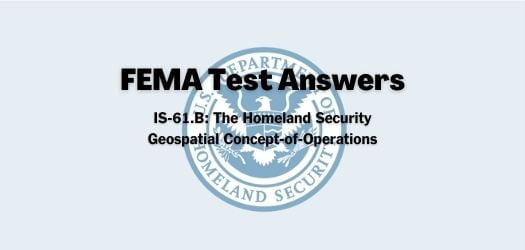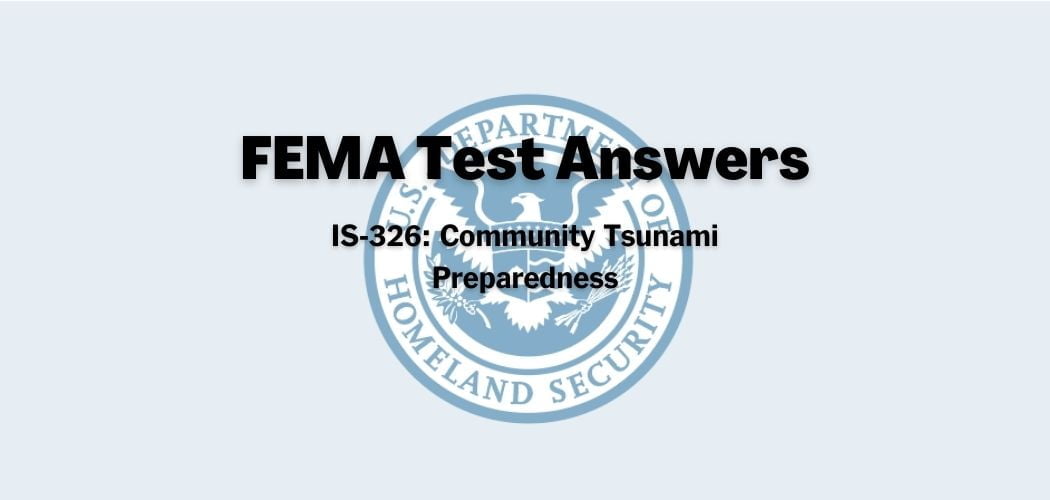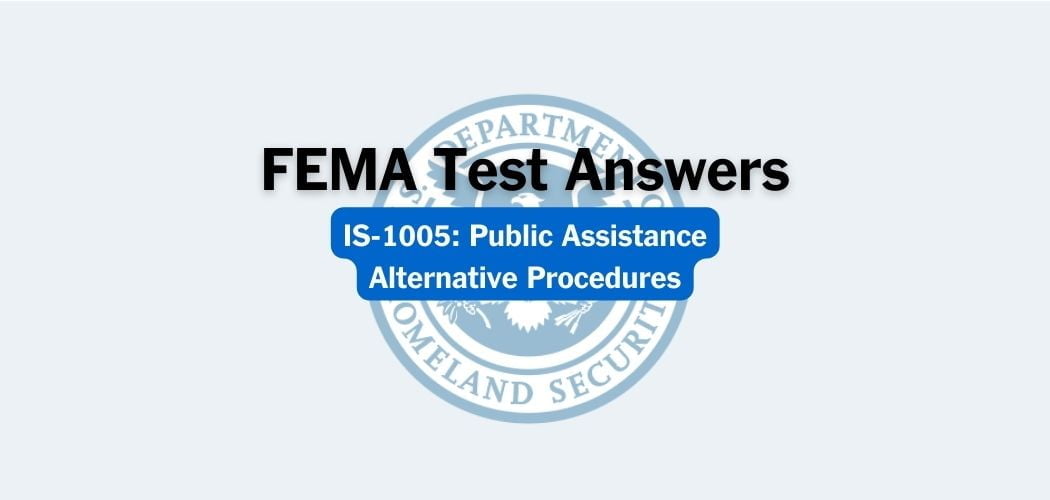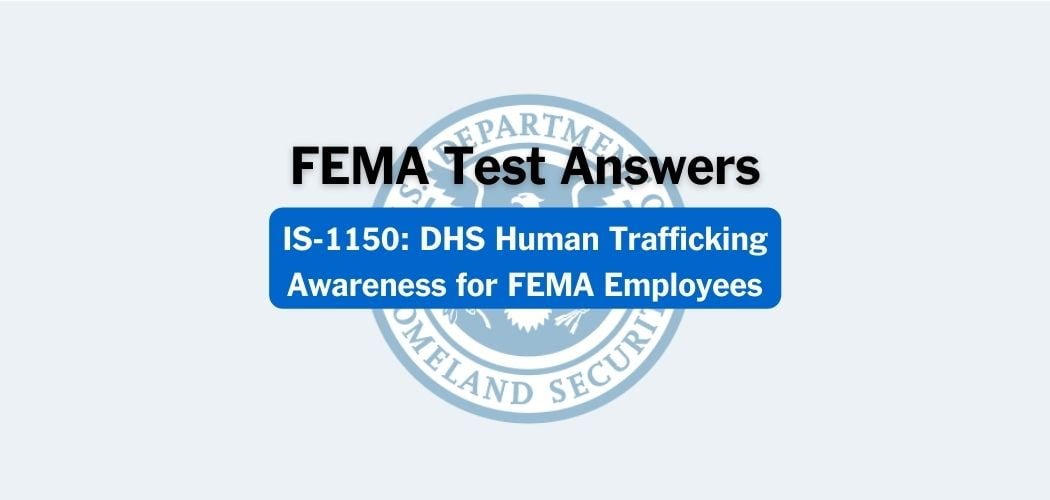Overview: FEMA IS-393.B course was published on 6/15/2017 to reduce or eliminate long-term risks from hazards and their effects. FEMA has produced a series of courses intended to train those who have responsibility for, or are simply interested in, reducing hazard risks in their States, communities, or Tribes.
Primary audience: The FEMA IS-393.B course is for all State, local, and tribal government emergency program managers, other emergency management staff, and other local government employees responsible for mitigation. The secondary audience includes Federal emergency management personnel and employees of Federal, state, and local governments who work in the emergency management field.
FEMA IS-393.B test answers
Each time this test is loaded, you will receive a unique set of questions and answers. The test questions are scrambled to protect the integrity of the exam.
Question 1. What is the first step for developing the community hazard mitigation plan?
A. Prepare the implementation strategy.
B. Establish mitigation goals.✅
C. Identify and prioritize mitigation actions.
D. Document the planning process.
Question 2. What differentiates the Mitigation mission area from Prevention and Response mission areas?
A. The emphasis on environmental protection
B. The emphasis on situational awareness.
C. The emphasis on sustained actions to reduce long-term risk
D. All of the above✅
Question 3. Which of the following is a result of communities taking steps to reduce their vulnerability to potential hazard events?
A. Shorter recovery time period after a disaster
B. Reduced damage to property after a disaster
C. Improved attractiveness to individuals and businesses
D. All of the above✅
Question 4. What does the assessment of risks determine?
A. Probability of a hazardous event
B. Severity of a hazardous event
C. Potential impact on the community
D. All of the above✅
Question 5. The National Earthquake Hazard Reduction Program (NEHRP) is one of the Federal mitigation programs.
A. TRUE✅
B. FALSE
Question 6. What is one of the benefits of identifying hazards at the beginning of a risk assessment?
A. Foster relationships with experts at the State and community levels.
B. Receive funding from Federal agencies.
C. Identify assets that may be affected.✅
D. Bring together volunteers in the community.
Question 7. The State Hazard Mitigation Officer will want the results of the risk assessment to…
A. compare with the Statewide risk assessment.
B. incorporate into the Statewide risk assessment.
C. rate the success of the assessment.
D. Both A & B✅
Question 8. Establishing mitigation goals may involve developing a list of _____ that explain what the community wants to achieve with the plan.
A. Risk assessments
B. Mitigation strategies✅
C. Problem statements
D. Implementation strategies
Question 9. Risk is susceptibility to physical injury, harm, damage, or economic loss.
A. TRUE
B. FALSE✅
Question 10. What is the goal of all hazard mitigation efforts?
A. Employment increase
B. Risk reduction✅
C. Resources preservation
D. Cost reduction
Question 11. The Hazard Mitigation Grants Program is authorized under Section 404 of the Stafford Act.
A. TRUE✅
B. FALSE
Question 12. Communities may pursue disaster resilience through…
A. reducing risks to future development.
B. taking steps to protect existing development.
C. preparing people, property, critical infrastructure, and the economy to withstand from the impact of disasters.
D. All of the above✅
Question 13. Critical facilities to consider during the inventory of assets include hazardous material facilities such as…
A. a dam.
B. a communications facility.
C. a factory producing flammable materials.✅
D. highways.
Question 14. Which of the following is one of the Federal mitigation programs?
A. TRIO Program
B. NextGen
C. Federal and State Technology Partnership Program
D. National Dam Safety Program✅
Question 15. Once complete, it is important to compile the results of the entire risk assessment into a:
A. Town hall meeting with community residents
B. Written report✅
C. Brochure
D. Meeting among elected officials
Question 16. Which of the following is an example of a mitigation action?
A. Providing supplies to those who have lost their homes in a disaster
B. Providing emergency health and medical services
C. Relocation of homes away from hazard-prone areas✅
D. Conducting situational assessment
Question 17. In the flood mitigation success story you’ve read in Lesson 1, how was Juan Ponce in Hays County, TX able to minimize the flood damage to his home during the flood in his community?
A. By evacuating his home
B. By elevating his home✅
C. By having flood insurance
D. All of the above
Question 18. Which of the following is one of the types of hazard mitigation actions?
A. Local plans and regulations
B. Education and awareness programs
C. Natural systems protection
D. Structure and infrastructure projects
E. All of the above✅
Question 19. What is the first of the four phases for building a community hazard mitigation plan?
A. Organize resources.✅
B. Develop the mitigation plan.
C. Implement the mitigation strategy and monitor progress.
D. Assess risks.
Question 20. ________ in recent decades has led to sprawling suburban communities and homes, built with strong attention to protection against high winds, flooding, wildfire, or other natural hazards.
A. Land development✅
B. Deforestation
C. Globalization
D. Land degradation
Question 21. Which of the following is a Federal mitigation program?
A. EnergyStar
B. Transitional Living Program
C. Public Housing
D. National Flood Insurance Program✅
Question 22. The best way to show areas affected by hazards is to record the data on a:
A. photo
B. written report
C. tape recorder
D. base map✅
Question 23. What is a hazard?
A. Something that is potentially dangerous or harmful, often the root cause of an unwanted outcome✅
B. The people, property, systems, or functions that could be lost to a hazard
C. Susceptibility of people, property, industry, resources, ecosystems, or historical buildings and artifacts to the negative impact of a disaster
D. The estimated impact that a hazard would have on people, services, facilities, and structures in a community
Question 24. Whose mitigation roles does the National Mitigation Framework describe?
A. Individuals
B. The Federal Government
C. Emergency Management Professionals
D. The whole community✅
Question 25. Media outlets are part of the Whole Community.
A. TRUE✅
B. FALSE



